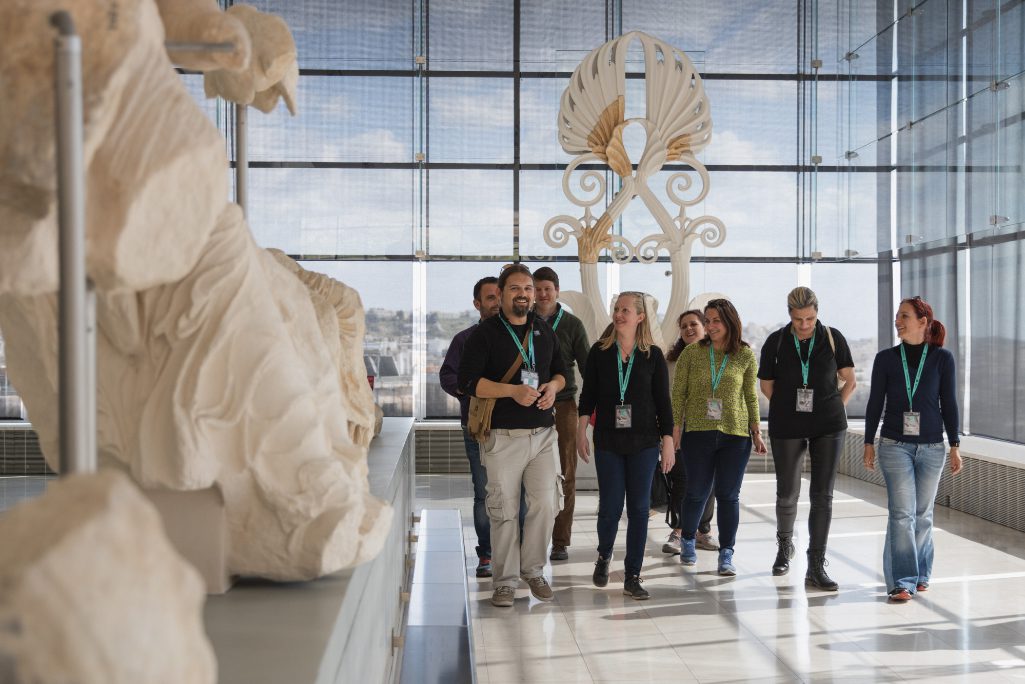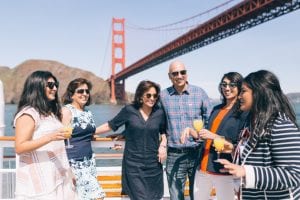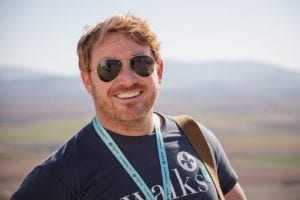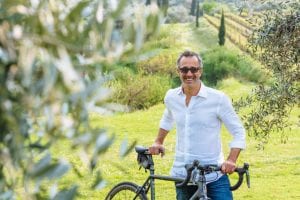Skift Take
Hornblower's acquisition of Walks and Lindblad's takeover of DuVine are great case studies. They show how young companies can land well even in times of crisis. The lessons ought to resonate across the travel sector.
The tours, activities, and experiences sector has been an unheralded bright spot for acquisitions in the travel industry.
In recent months, Hornblower Group acquired walking tour company Walks and other experiences brands. Lindblad Expeditions took a majority stake in DuVine Cycling and Adventure and another experience brand. GetYourGuide acquired Guidatours.
The deals were less interesting for their size than for what they symbolized. The companies didn’t disclose terms at a time when the pandemic had slashed valuations. Yet the transactions still suggested a revival in momentum for applying modern selling and business techniques to the fragmented tours-and-activities sector.
Join Us at the Skift Short-Term Rental and Outdoor Summit on May 19
The deals reflect the scorch marks of the pandemic. Travel attracted only $4.1 billion of venture capital in 2020, down 55 percent from 2019 — the lowest level in nearly a decade, said Skift Research.
Before the pandemic, the tours and activities sector was hot. Investors backed players in e-commerce and operational software with more than $1 billion in funding over a few short years.
The latest set of deals is smaller, but it may represent the edge of a wave. Investors are betting that scale and fresh capital will help suppliers adapt to an expected post-pandemic surge in demand for authentic experiences that stand in sharp contrast to Zoom meetings — plus the rise of advance bookings via mobile devices.
Here’s a closer look at the acquisitions of Walks and DuVine Cycling and Adventure. Startups may find applicable lessons in how they chose customer segments, how they built their cost structures, and how they hustled in marketing.
The CEOs of both Walks and DuVine said in separate interviews a similar thing: Focusing on the customer and refining the product in response is a superior approach to business. But that advice is easier said than followed.
“Investors have often struggled to understand why the tours-and-activities space is so fragmented, and why brands rarely scale,” said Walks co-founder and CEO Stephen Oddo. “Part of the problem is that what the customer wants is often a really specific experience that requires a lot of complexity to fulfill.”
“Let’s say I, as a traveler, want to go to the Amalfi Coast,” Oddo said. “I want to do it within one day, and I also want to have a lunch at the right time, but I also want to go shopping, and I want to see Pompeii, and I want to be back in time for dinner.”
“That’s super hard to design exactly that,” Oddo said. “But if you get close, you can be very successful in the experiences sector.”
The Inexperienced Sector
Last month, Walks was acquired by Hornblower Corp., a provider of water-based experiences such as the official ferry boat service to Alcatraz Island and to the Statue of Liberty National Monument.
Since January, Hornblower has also acquired ShoreTrips and Cruise Excursions and changed its consumer facing branding to City Experiences.
“This partnership will allow us to further expand our land-based offerings across the globe,” said Kevin Rabbitt, CEO of Hornblower Group.
At its height before the pandemic, Walks offered more than 100 tours across 14 cities, including Rome, Venice, Paris, and New York. In 2019, it served 500,000 customers.
As the recovery unfolds in phases, City Experiences plans to rebuild the Walks schedule and expand its offerings. It is adding Walks tours to its site, but the Walks brand will remain for now.
The company’s pre-pandemic performance had led to pre-pandemic interest. The first in-person talks between Hornblower and Walks were scheduled in late February 2020 in New York — with parties from both sides coming to town. But that turned out to be the week that the U.S. confirmed its first Covid-19 death. So at the last minute, the meeting was scuttled.
“It was very surreal because I remember taking the subway and thinking this might be the last time I’ll be in New York for quite a while,” said Oddo, the Walks co-founder and CEO, who is based in Massachusetts.
Talks resumed in earnest last fall. A venture capital firm made a separate offer. The company wasn’t in the strongest position at that point. The pandemic had forced it to lay off about 90 percent of its approximately 105 employees. It didn’t have enough demand for most of its 700 guides on call, except for video-based tours that barely covered their costs.
Walks did have assets, though. It had consumer brand recognition and loyalty, a formula that had been profitable in normal times, expertise in product innovation, and scalable tech.
Oddo and co-founder Jason Spiehler had “bootstrapped” Walks — meaning, they had grown it by being disciplined in ensuring it would throw off cash that they could reinvest in the business. This approach freed the founders from being anchored to investors with unrealistic expectations.
“Some tour operators think they need to be everywhere because then one of the big names, like Expedia, will contract with them because they’re everywhere,” Oddo said. “Sometimes that’s true. But that’s not necessarily the best decision, business-wise.”
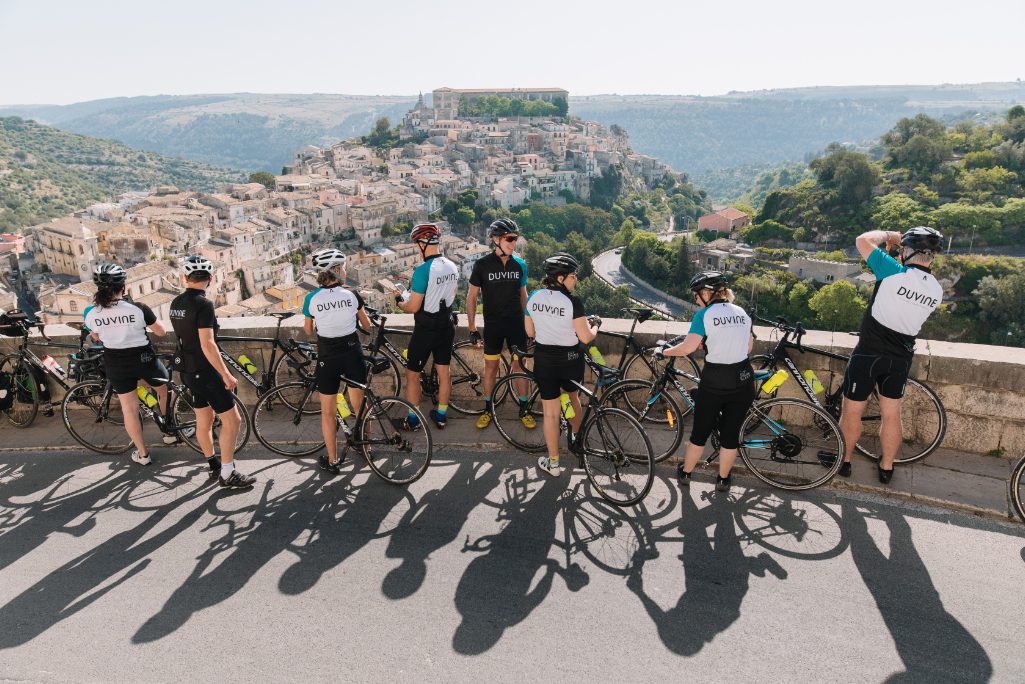
A tour stop in Sicily, Italy, as part of DuVine Cycling & Adventure, which was recently acquired by Lindblad Expeditions. Photo by Taylor Burk. Source: Lindblad.
A Cycling Business That Sails Through Business Cycles
Lindblad Expeditions took a majority stake in DuVine Cycling and Adventure in March. For decades, Lindblad Expeditions has offered marine-focused expeditions aboard small ships. But it also sees the complementary potential of ground-based adventure offerings. The public company also acquired in March Off the Beaten Path, which focuses on high-touch exclusive experiences in North American National parks,
A serendipitous encounter led a Lindblad board member to introduce the idea of acquiring DuVine Cycling and Adventure to Lindblad’s team. An early conversation happened right before the pandemic struck. DuVine appealed because of its profitability and its focus on a high-end demographic that’s set to grow.
“Bicycle touring as a category is going to enjoy the greater production and use of e-bikes, which significantly broadens the demographics of potential participants,” said Sven-Olof Lindblad, the president, CEO, and director.
The pandemic also boosted the popularity of biking. Many adults returned to cycling as a pastime during stay-at-home restrictions, with sales breaking records.
That trend translated into a greater interest in cycling tours post-pandemic. In April, DuVine had the strongest booking month since its founding in 1996.
“I’ve always been drawn to entrepreneurial companies that have very, very keen focus,” Lindblad said. “Trying to do too many things doesn’t work necessarily all that well.’
Lindblad plans to preserve the DuVine brand. He sees the acquisition as an opportunity to do cross-marketing across a similar customer base. He also expects to find efficiencies on the back-end of operations and administration.
“We’re acutely aware of the importance of not damaging the spirit of the entrepreneurial entity that we acquired,” Lindblad said. “Unfortunately, a lot of financial guys, you know, they wind up putting together these roll-ups of companies, and they almost invariably screw it up.”
Andy Levine, founder and CEO of DuVine, came to France the day after graduating from the University of Denver in 1996. He saw that, aside from Butterfield and Robinson, no one was providing tours that balanced being a bicycle enthusiast with being a traveler. At the time, cycling and luxury weren’t said in the same breath.
“The high-end market had a gap,” Levine said. “I felt ‘luxury’ was being redefined by a new generation. Luxury had become more about timing and connections and access and attention to detail and making all the gears mesh.”
Levine, as an American and a one-person shop, found it hard to break in with the owners of independent wineries, hotels, and supply shops.
“It wasn’t easy trying to get meetings in Bordeaux and the surrounding provinces,” Levine said. “I was getting yelled at a lot and hearing a lot of ‘no, no, no.'”
Levine persisted, studying the culture and learning to become “super organized and very professional.”
“I created relationships over wine and coffee,” Levine said. “Then I was invited into people’s houses. I learned I had to build a relationship, not just offer a money transaction, which I totally dug.”
The company gathered steam in France, and then around 1999, it entered the Italian market. That sped up the pace of growth.
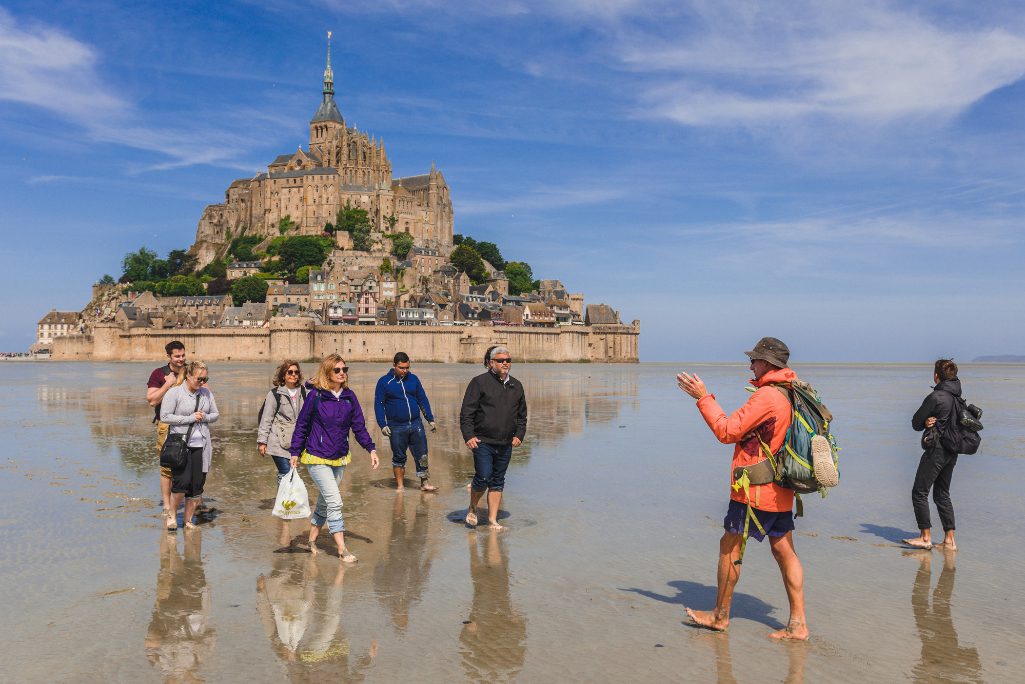
A Walks-branded tour of Mont-Saint-Michel, a tidal island in Normandy, France. Source: City Experiences.
Walking the Talk
When looking at both the DuVine and Walks deals, you see a bottom-line message: Profits matter. Both recent acquisitions had been performing well enough that they had drawn investor interest before the coronavirus hit.
The stories of Walks and DuVine highlight a related key point. Entrepreneurs who seek to land well even in times of crisis need to build businesses that throw off cash. While that may sound obvious, it often takes founders time to get there.
Walks, for instance, began in 2010 when Oddo met Spiehler in St. Peter’s Square in Rome. Oddo had been in the market for a scooter, and Spiehler, a tour guide, had one to sell.
The pair hit it off. Oddo had also been a guide, but he saw that Spiehler was a much better one — with a distinctive and high-quality style that drew crowds. The pair set about replicating Spiehler’s model as a way to stand apart from mass-market tours.
“Back in 2010 in Rome, everyone was leading 60-person groups everywhere, and the guides were giving Wikipedia-like descriptions of things,” Oddo said.
At the time, one of the only walking tour brands doing anything distinctive was Context Tours, founded in 2003. Context targeted the high-end of the market, with tours capped at small sizes of about six people. It also hired guides vetted for specialized knowledge of a topic, such as a master’s student in art history leading a museum tour or a chef leading a food markets tour.
Walks strove for premium, but not “luxury,” segment. It sought a place between the high-end niche held by Context and private guides, and the cheap or free, oversized group tours that dominated the market. The company said yes to quality control and smaller group sizes averaging around 12 people. But it also said yes to affordability and informality.
From early on, Walks used marketing to build pricing power and margins to stand apart from the dozens of other operators who were small and lacked financial savvy. The company launched with a well-designed website, which in 2010 was rare for walking tour operators.
Oddo saw that acquiring customers through digital marketing, such as with paid ads on Google, can be costly.
“Travel purchases are episodic, so this business is about loyalty and recurrence,” Oddo said. “You need to nail the product and the customer repeat rate before you can generally use venture money to scale, with rare exceptions.”
Walks instead invested a lot in content marketing. It was ahead of most companies in its space in doing social media and blogging. It was early to working with social media influencers to build the brand’s awareness and credibility.
In other words, it did “growth hacking” before that became a thing.
Yet marketing only thrives when a company has a distinctive brand story to tell. So refining the product was crucial, and the company studied consumers and their needs for clues on how to improve.

A cyclist on a DuVine branded tour in the Dolomites. Photo by Taylor Burk. Source: DuVine Cycling & Adventure.
The Right Focus Versus the Wrong Focus
Levine said that, prior to hearing from Lindblad, he hadn’t been looking to sell DuVine and had planned to keep reinvesting from growth. There’s a lesson in that.
“The smart saying is that ‘you don’t sell your business, your business gets bought,'” Levine said. “It’s a paradox that if you’re fixated on flipping your company, no one’s going to want to buy it.”
In the case of a cycling tour company, executing well meant a few things, Levine said.
You have to hire and train staff carefully. You have to learn how to manage customer expectations, such as by matching people with similar cycling skill levels in the same groups.
You also have to fill more niche tours as effectively as your greatest hits tours so that you keep expanding and refreshing your portfolio. And you have to streamline the complex “supply chain” that goes into creating a multi-stop, multi-day cycling tour.
“It’s always hard when you’re an operator of a certain size to win at the whole concept of customer acquisition, which is the name of the game in travel, right?” Levine said. “Lindblad’s team can take our game up a level. We’re stoked.”
DuVine had never taken outside money. So Levine was able to keep the company’s sale price at a reasonable level without interference from external investors.
“I think my father, way back when, maybe paid one month of my rent,” Levine said. “Otherwise it’s been all growth out of revenue.”
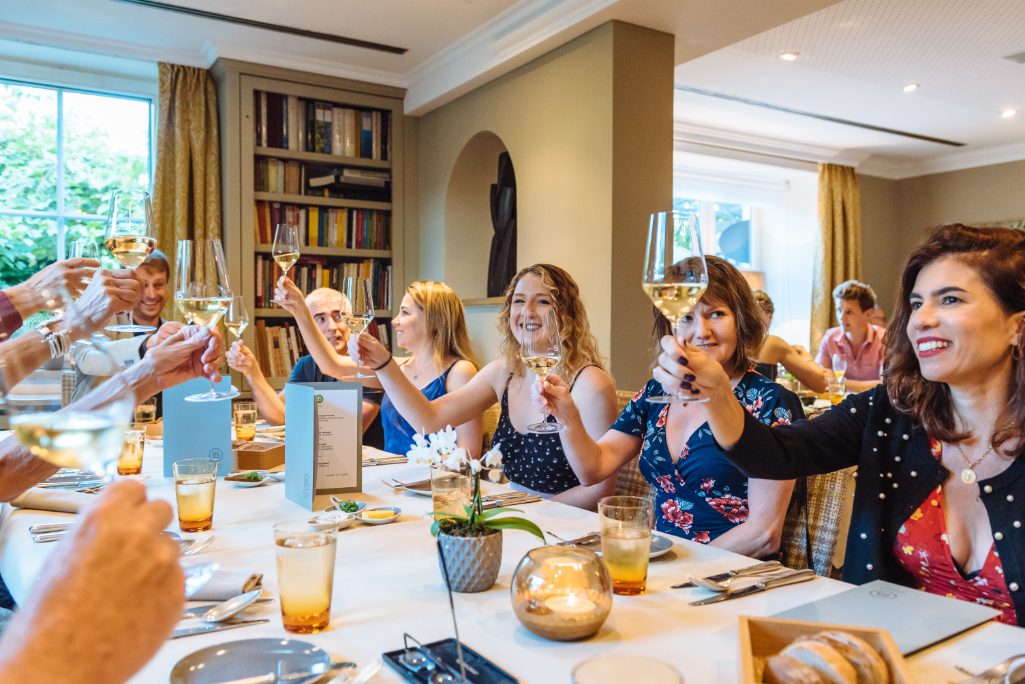
DuVine Cycling wine tasting stop during cycling tour of Czech Republic and Austria. Photo by Gwen Kidera. Source: DuVine.
Business Mantras Worth Following
Two mantras for Walks were learning from customer feedback and always developing new products to re-activate interest in the brand.
“A lot of operators were just offering redundant products, which made it hard to offer any particularly engaging marketing,” Oddo said.
One underserved segment of the market was travelers who didn’t like planning but were still willing to pay for higher-quality tours.
So the company developed a product around 2017 called Walk On, Walk Off, which was like buying a pass for many tours at a volume discount. A guest purchased a pass, and then received a schedule of all the tours during their stay at a destination. The travelers could go to as many of the walks as they wanted. They would show the pass, which is a QR code the guide would scan.
Another key demand from travelers was to have an experience they could share back home as being distinctive.
“We needed to find a unique twist on the Louvre or a new way to access the St. Mark’s facility in Venice off hours at night,” said Oddo, who spent a lot of time meeting with attractions and sites and museums to find more creative partnerships.
An example of exclusive content is that the Walks team negotiated with Disney to gain access to Broadway’s New Amsterdam Theatre. Guests can go backstage to see props and masks from Disney productions, such as Aladdin and The Lion King.
Another mantra for the company was efficiency.
To gain efficiencies, the company invested in technology. It generated enough free cash it could afford to invest about $5 million in creating its software.
“We had a team pre-pandemic team of 12 developers who created tools to handle tasks like ticketing and schedule management for guides,” Oddo said. “We used software to track the quality of the guides over time, based partly on customer feedback.”
To be sure, not every travel experience operator has enjoyed the same resilience as Walks and Levine.
Investment professionals generally agree that the biggest consequences of the pandemic are still unfolding. Some operators will fold, especially ones in markets that cannot afford large fiscal stimulus and business support plans for private companies.
Even in markets that are reviving, entrepreneurs will face strains.
“It’s sort of like you’re coming off the couch to race the Tour de France,” Levine said. “We’re all hiring our best people back, but it’s taking some folks a moment to get back in the groove and handle the coming surge in travel.”
Join Us at the Skift Loyalty and Subscription Summit on April 21
The Daily Newsletter
Our daily coverage of the global travel industry. Written by editors and analysts from across Skift’s brands.
Have a confidential tip for Skift? Get in touch
Tags: attractions, experiences, mergers and acquisitions, startups, tourist attractions, tours and activities, travel startups, walking tours
Photo credit: A pre-pandemic walking tour led by a Walks guide of the Acropolis Museum, an archaeological museum focused on findings in Athens, Greece. Walks
